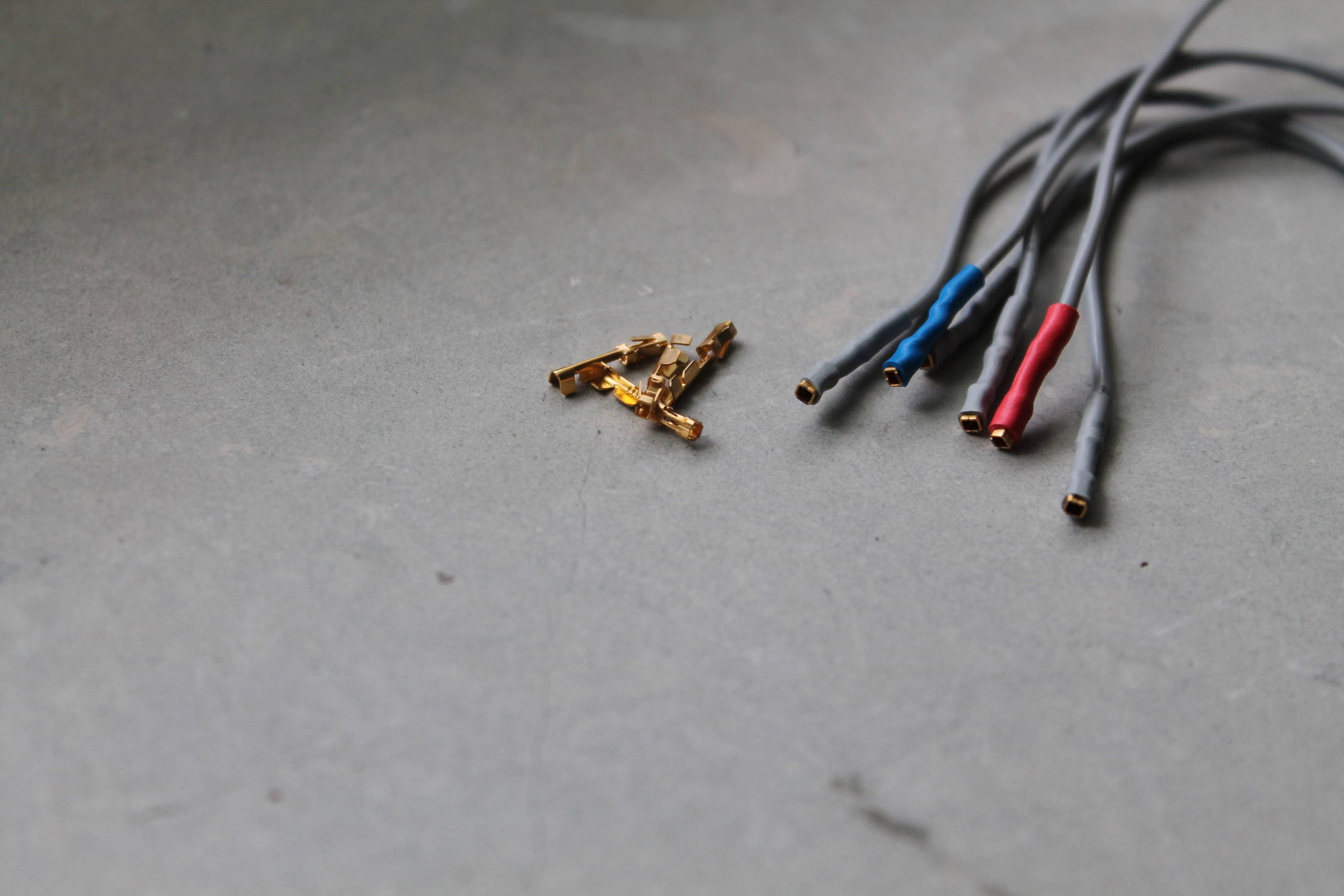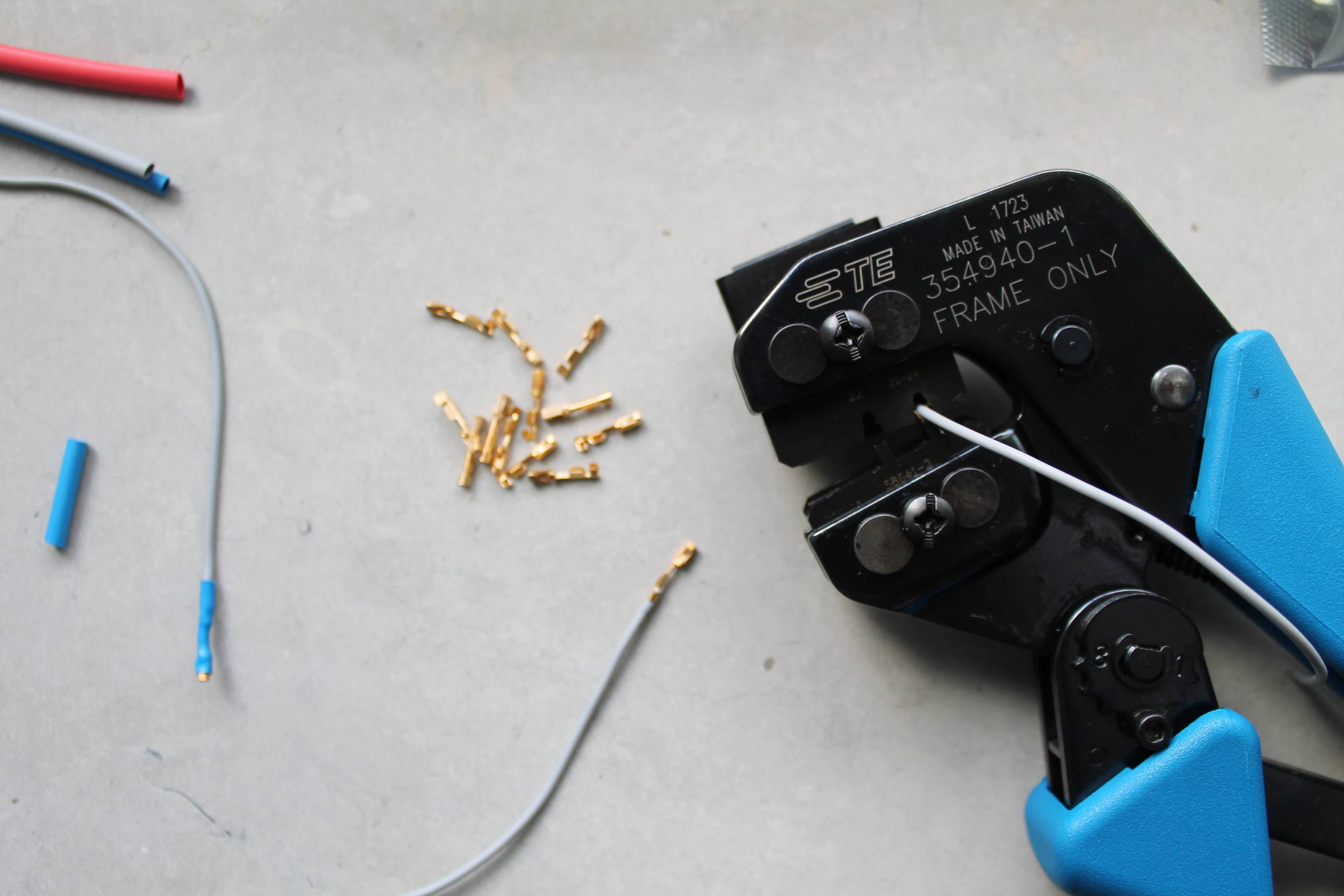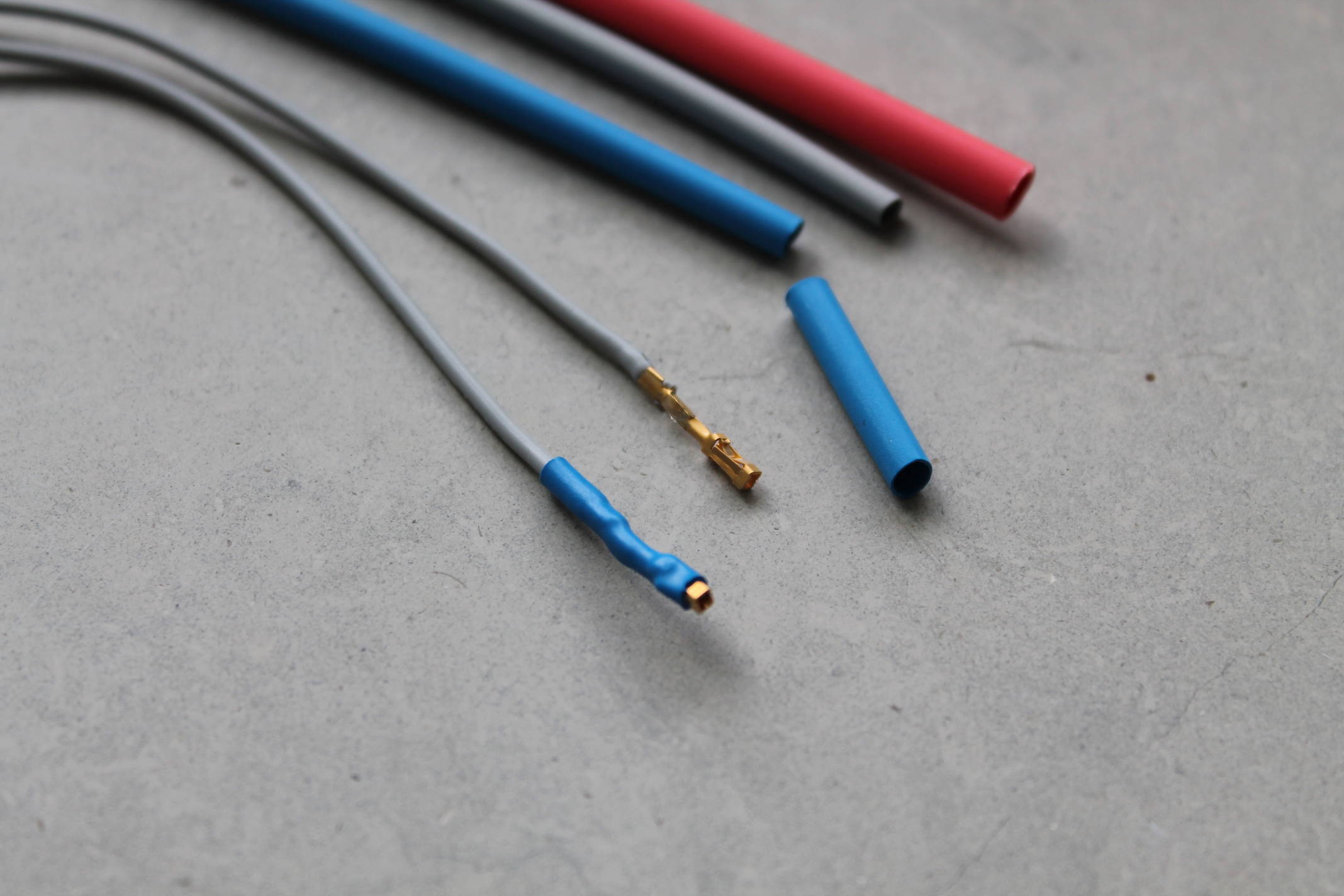Make your own jumper wires that last

Make your own jumper wires that last
Pretty much all of the jumper wires I have bought and used for prototyping are of really bad quality. If they don't fall apart the moment you pick them up, they only lasts a few connection cycles before totally giving up ang getting loose enough to not have a connection at all.
Debugging faulty wires is not only time consuming, it is also boring and a great motivation killer. So I decided to get rid of the problem once for all by making my own jumper wires. There are many types of connectors but I made it easy for my self and picked the one that nearly all of the development and evaluation boards uses; the regular 0.1" spaced pin headers.
To be able to make my own wires I would need the following tools and components:
- Terminals
- Wire
- Housing
- Heat shrink wrap
- Crimping tool
The terminals
Now, finding the terminals for the connectors was not as trivial as I thought. It seems like all of the well known connector manufacturers have their own versions with a range of alternatives each. Cheap to expensive, tin to gold, brass to beryllium copper, low-pressure to high-pressure, and different AWGs. It also turns out that high prise doesn't always mean better.
I bought the following terminals and tested them by connecting, disconnecting, turning, twitching, and shaking them to simulate a lifetime of many projects with eager usage.
| Manufacturer | Product Family | Part Number | Material | Contact Plating | Cost |
| Molex | C-Grid III | 90119-0121 | Phosphor bronze | Gold | £78 |
| Molex | C-Grid III | 90119-2121 | Phosphor bronze | Gold | £78 |
| TE Connectivity | AMPMODU MOD V | 1-87309-3 | Phosphor bronze | Tin | £78 |
| TE Connectivity | AMPMODU MOD V | 102128-1 | Phosphor bronze | Gold | £78 |
| Amphenol ICC | Mini-PV | 47745-001LF | Brass (spring of beryllium copper) | Gold | £78 |
| Harwin | M20 | M20-1180042 | Brass | Gold | £78 |
Verdict
Molex C-Grid III 90119-0121
Didn't last long before totally giving up. I wouldn't use them in prototyping were they will get used a lot. However, they are rediculously cheap.
TE Connectivity AMPMODU MOD V 1-87309-3
A bit better than the ones above, but not much as they could only handle a couple of more turns.
TE Connectivity AMPMODU MOD V 102128-1
Much better than the tin plated as they could handle a lot before getting unusable. I may pick these due to the relatively cheap crimping tool.
Molex C-Grid III 90119-2121
Could handle a lot and was really hard to make unusable. However, they aren't high-pressure so I maybe shouldn't use them in robotics applications.
Amphenol ICC Mini-PV 47745-001LF
The clear winner since they were pretty much indestructible. It is also the most expensive of the one I tested and the crimping tool costs a fortune.
Harwin M20-1180042
Theses looks exactly like the ones used in the jumper wires I bought and they are also equally bad. They stopped working very quickly. It probably has to do with the fact that they are loose-pressure and may work fine in some applications, but as reusable jumper wires, they do not.
Wire
It is much easier to find a good wire, it just needs to be of the correct size (AWG) and have a fitting insulation diameter. The terminal I picked, AMPMODU MOD V 102128-1, works with 26-22 AWG wires with a maximum insulation diameter of 1.55 mm. I found a suitable silicone insulated wire from Adafruit. Since it is both stranded and has silicone insulation, it is really flexible as well as durable.
Crimping tool
A crimping tool is used to attach a terminal to the end of the wire. I made it easy for my self and just bought the official tool from TE Connectivity. It was the cheapest among the different manufacturers so I was lucky. If you're thinking of using a universal crimping tool, this blog post covers more deeply about various crimping tools.
I also found out that the AMPMODU tool work OK with the Mini-PV terminals.

Housing
The connector housing is the plastic case holding the terminals. All of the manufacturers have a great selection of various housings; with and without keys, different pins etc. However, using a shrink wrap is cheaper and works fine for simple jumper wires. It is also possible to color code them which is a big advantage.

